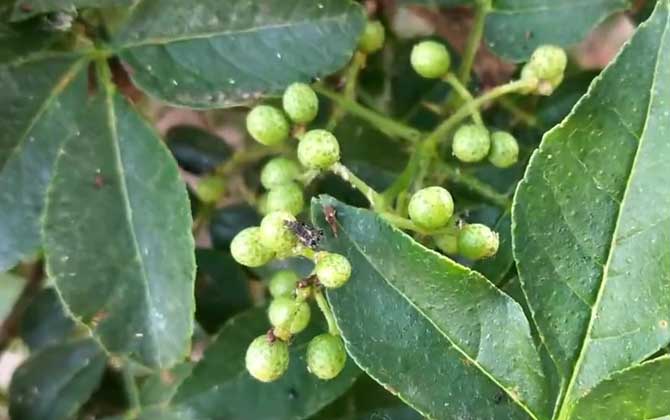Zanthoxylum acanthopodium seed

Zanthoxylum acanthopodium (Prickly Ash) Overview
Description
Zanthoxylum acanthopodium, commonly known as Prickly Ash or the “thorny pepperwood,” is a shrub or small tree belonging to the Rutaceae family. This plant is native to tropical and subtropical regions of Asia, particularly found in countries such as china, India, and Myanmar. It typically grows to a height of 3 to 5 meters and is characterized by its glossy, pinnate leaves and spiny stems. The plant is named “Prickly Ash” due to the numerous thorns or spines that cover its branches, which can serve as a defense mechanism against herbivores.
The small, yellowish flowers appear in clusters during the late spring and summer months. The plant produces small, aromatic fruit that contain seeds, which are sometimes used in traditional medicine and culinary applications. Its distinct aroma comes from the essential oils contained within the plant, which give it its peppery scent.
Ecological Role and Habitat
Zanthoxylum acanthopodium thrives in forested and semi-arid environments. It is commonly found in hilly or mountainous regions, growing in well-drained soils that are rich in organic matter. The plant is adapted to withstand a variety of environmental conditions, including drought, and is frequently seen in areas with moderate to high rainfall. Its ability to adapt to varying climates and its fast growth rate make it a useful species for afforestation and reforestation projects.
Uses and Benefits
- Culinary Use: Zanthoxylum acanthopodium is often used in Asian cuisine, particularly in China, where it is known for its aromatic and spicy seeds. These seeds are commonly used as a spice, adding a peppery flavor to dishes, similar to Sichuan peppercorns, and are frequently used in sauces, broths, and stir-fries. The fruit and seeds have a numbing effect on the tongue, a characteristic shared with other species in the Zanthoxylum genus, which are often featured in traditional chinese cuisine.
- Medicinal Uses: Traditional medicine has long utilized various parts of Zanthoxylum acanthopodium, including the bark, fruit, and leaves. It is believed to have several health benefits, such as promoting circulation, treating digestive issues, and alleviating pain. In particular, the bark is sometimes used in folk medicine to treat conditions like rheumatism, while the fruits and seeds are considered effective for improving digestion and relieving stomach bloating.
- Traditional and Cultural Uses: In some cultures, Zanthoxylum acanthopodium is used in traditional rituals and spiritual practices. The plant’s thorns, symbolic of protection, are sometimes included in rituals for warding off evil spirits or promoting strength and resilience. The plant’s bitter yet pungent flavor also has symbolic ties to both protection and vitality in some regions.
- Environmental Benefits: Zanthoxylum acanthopodium has some ecological uses, especially in soil conservation and afforestation. Its spiny branches help to reduce soil erosion by acting as a natural barrier, preventing soil from being washed away by heavy rains. Additionally, the plant can contribute to the biodiversity of forested areas by providing shelter for wildlife and helping to enrich the soil with its leaf litter.
Conclusion
Zanthoxylum acanthopodium, or Prickly Ash, is a versatile plant with a rich history of culinary, medicinal, and ecological uses. From its peppery fruit used in cooking to its role in traditional medicine and cultural practices, this plant offers significant value. Moreover, its ecological benefits, particularly in soil conservation, make it a valuable species for maintaining healthy ecosystems in its native regions. Whether used in cuisine, as a natural remedy, or for its environmental contributions, Zanthoxylum acanthopodium continues to be an important plant in the regions where it grows.
